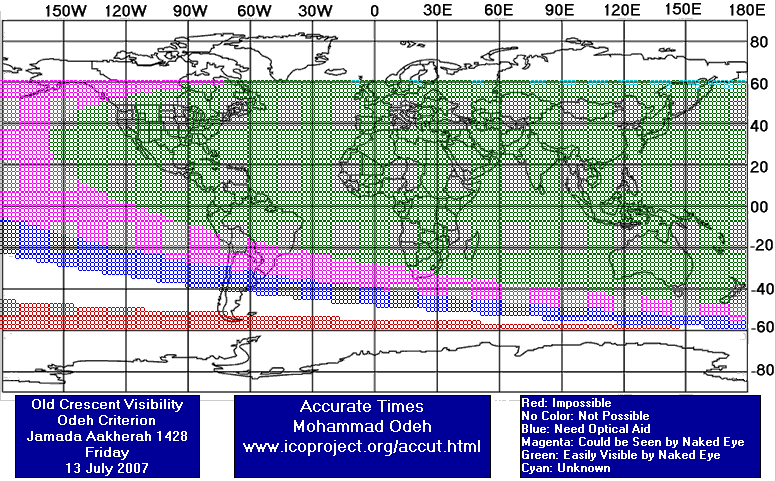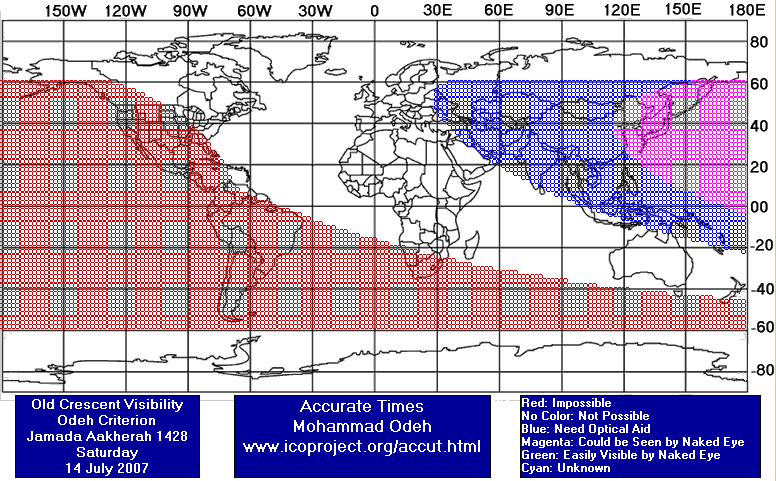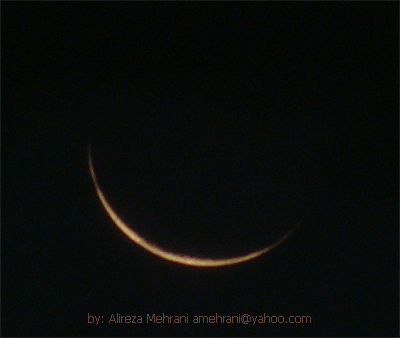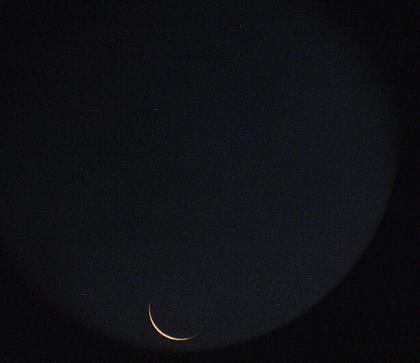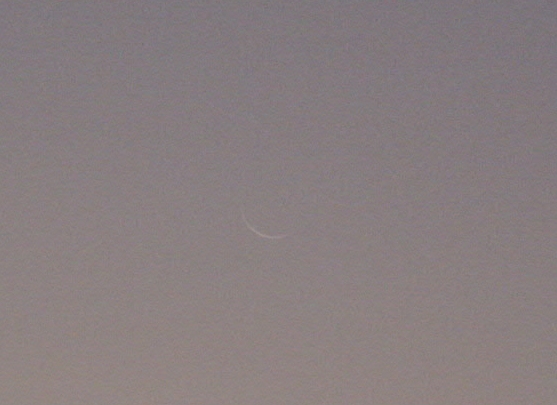Visibility of Rajab Crescent
(1428 AH)
- When to Observe Rajab Waxing (NEW) Crescent ?
- Rajab Waxing (NEW) Crescent Observation Results
- The OFFICIAL First Day in Different Countries
- Saudi Claims Seeing Rajab Crescent on Saturday 14 July 2007
- When to Observe Jumadal Thani (OLD) Crescent ?
- Jumadal Thani Waning (OLD) Crescent Observation Results
The geocentric conjunction (Geocentric New Moon) will occur Inshalla on (Saturday 14 July 2007) at
12:04 UT.
Sighting the new crescent on (Saturday 14 July 2007) and on (Sunday 15 July 2007) is shown in the below graphs using the program Accurate Times by Mohammad Odeh according to Odeh criterion. Where:-
According to the Universal Hejric Calendar (UHC), which is based on the calculated crescent visibility, the start of this month in the Eastern Region will be on Monday 16 July 2007, and in the Western Region will be on Sunday 15 July 2007.
- Results of seeing the crescent, and the first day of the month in different countries will be added here Inshalla as we receive the reports from ICOP's members. If you wish to be a member in ICOP, or to know more about it, kindly click here.
So far, the earliest sighting of the crescent was on Sunday 15 July 2007 by ICOP member Mr. Mahadi Mohamad Tahir from Brunei, the crescent was also seen on this day from UAE, Kuwait, Saudi, Lebanon, Algeria, Senegal, Tanzania, South Africa, Hungary and USA.
Saturday 14 July 2007:
Sunday 15 July 2007:
Sunday 15 July 2007:
Monday 16 July 2007:
Tuesday 17 July 2007:
Although it was 2 hours and 41 minutes old as seen from Makkah, and it stayed for 14 minutes only after sunset, Saudi officially declared that this crescent was seen! We wonder if all the experienced astronomers in the world were not able to see that crescent on that day from anywhere on Earth by telescopes even from far western location, then how it was visible in Saudi by naked eye! Well, we all know that this is not the first false sighting in Saudi! Kindly find below the official statement. Thus, Saudi will look for Shaban crescent on Sunday 12 August! We must feel shamed when our officials are asking us to look for the crescent when we know that the moon will set before sunset! It is not only waste of time, but it is also disrespect to the science and our minds.
The geocentric conjunction (Geocentric New Moon) will occur Inshalla on (Saturday 14 July 2007) at
12:04 UT.
Sighting the OLD crescent on (Friday 13 July 2007) and on (Saturday 14 July 2007) is shown in the below graphs using the program Accurate Times by Mohammad Odeh according to Odeh criterion. Where:-
When to Observe Rajab Waxing (NEW) Crescent ?
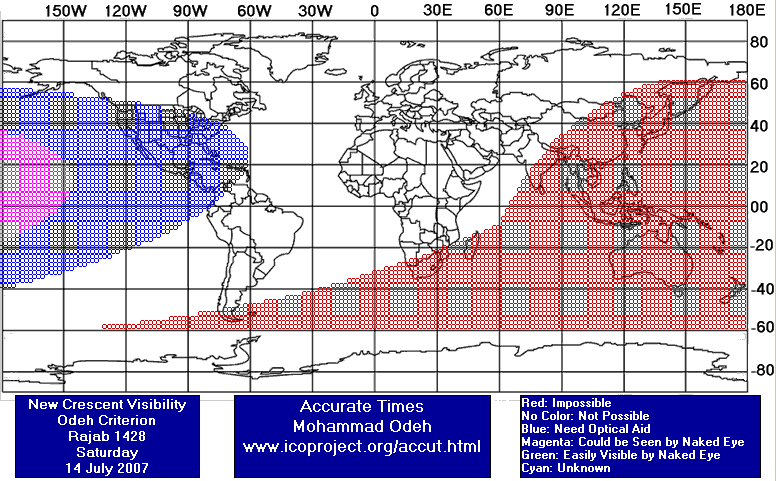
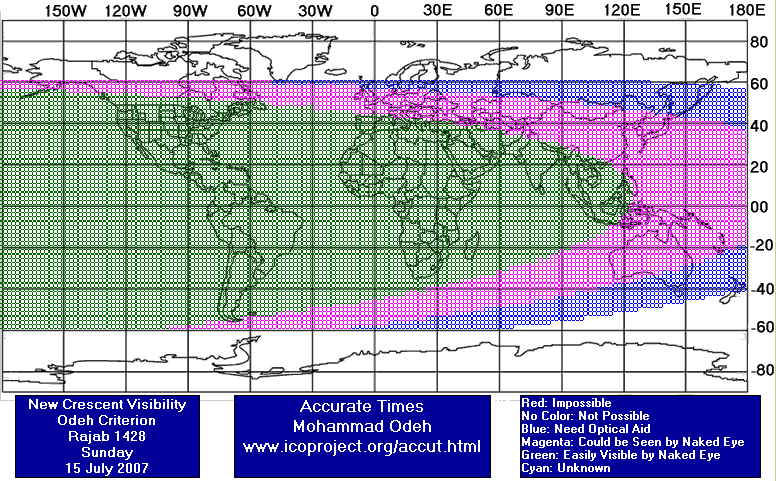

Rajab Waxing (NEW) Crescent Observation Results
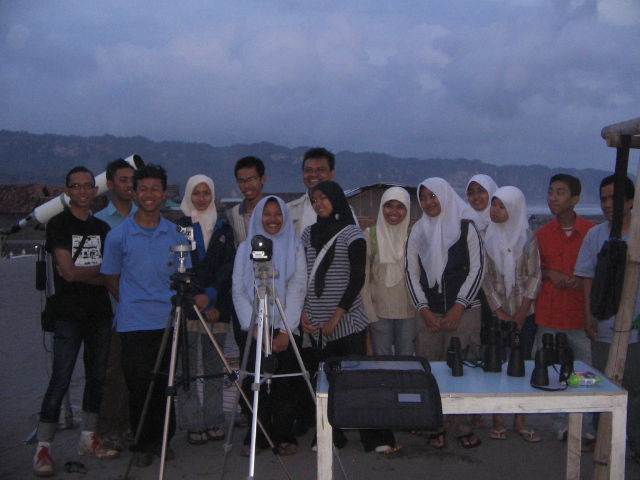
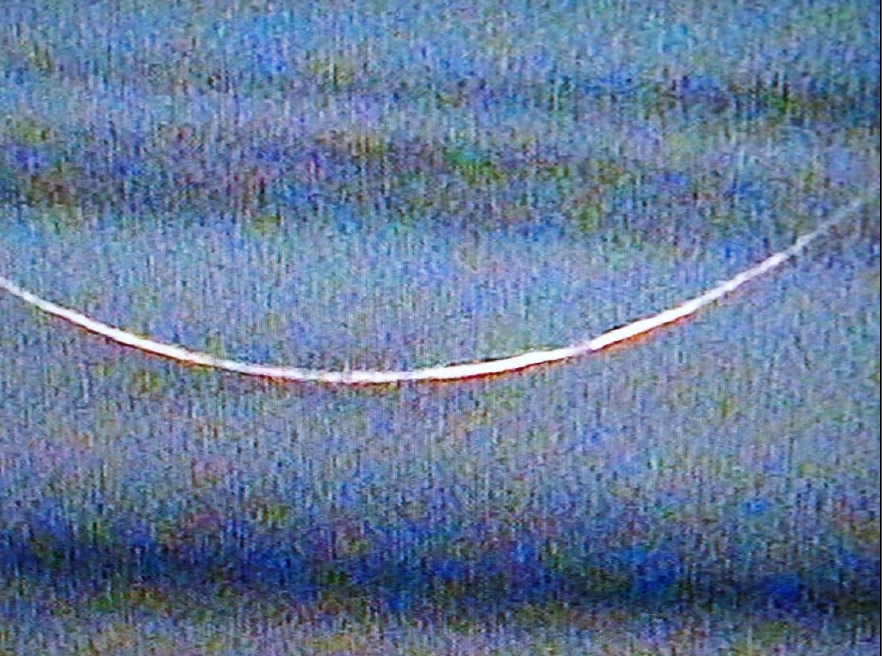
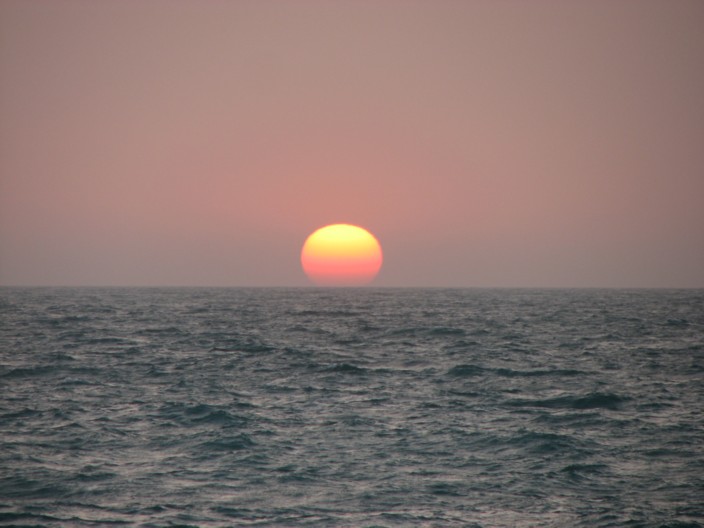

Sunset in Abu-Dhabi. By Moh'd Odeh

The OFFICIAL First Day in Different Countries

Saudi Claims Seeing Rajab Crescent on Saturday 14 July 2007


When to Observe Jumadal Thani Waning (OLD) Crescent ?
